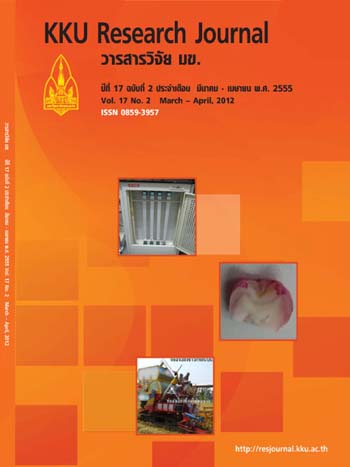Airborne microorganism removals using air purifi ers with different principles
Main Article Content
Abstract
Airborne microorganism (Staphylococcus epidermidis, Bacillus subtilis, Aspergillus niger, and Penicillium
citrinum) removals using a photocatalytic air purifi er, electrostatic air purifi er, ultraviolet air purifi er, and
ultraviolet air purifi er with a pre-fi lter were compared in this study. The experiment was conducted in a 2×2×2 m
chamber by injecting each microorganism into the chamber. The microorganism concentration was collected using
an Andersen impactor. The concentration before turning-on the air purifi er was compared to that during turningon
and that during turning-off periods. The triplicate results revealed that the PCO and ESP air purifi ers yielded
the highest effi ciency (76-98% and 80-99%, respectively) while the ultraviolet air purifi er showed the lowest
efficiency (39-89%). The pre-fi lter was thus added to the ultraviolet air purifi er to confi ne the microorganisms
and the ultraviolet light was irradiated onto it. It was found that the removal effi ciency was increased to 54-95%,
depending on duration time and microorganism types.


